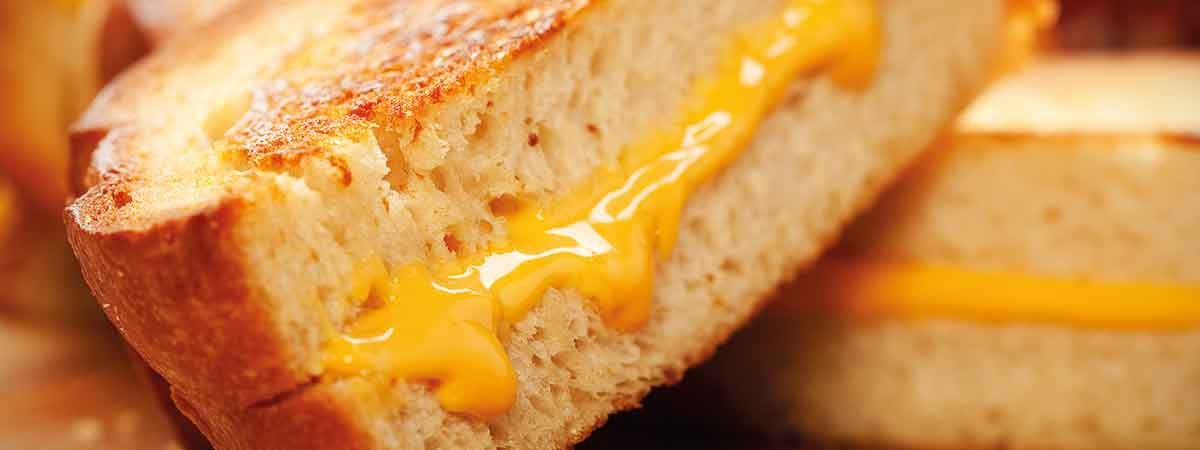Originally from southern England, this cheese speciality has been tickling food-lovers taste buds for centuries. It is now one of the most popular varieties in the world. In modern production systems, vacuum pumps help to ensure consistent quality.
As many as around 800 years ago, farmers in a village called Cheddar in south-west England began making cheese and storing it in the caves in Cheddar Gorge. Once inside the caves, it developed its unique flavor. Its fans even included the English royal family. In 1170, King Henry II ordered over four tons of the delicious dairy product. Charles I (1625–1649) even had all of Cheddar's cheese production delivered exclusively to the royal household.
A worldwide triumph
Two hundred years later, dairy owner Joseph Harding updated the production process. He also trained colleagues in Scotland and North America, while his son went on to take the technology as far as Australia. These days, Cheddar cheese is produced at a number of locations and consumed all over the world. Its palatable flavor, which intensifies during storage, is what makes it so popular. After one to three months of maturing, young cheddar has a mildly creamy and slightly acidic flavor. Mature cheddar is stored for 15 months or longer and has a tangy, nutty taste. Incidentally, the intense orange color of some varieties is achieved by adding Annatto, a traditional flavor-neutral coloring agent made from the seeds of the oleander bush, or by adding carotene.
The cheese's distinctive dense consistency is achieved in a process known as cheddaring. Traditionally, the process involved cutting cow's milk that had been thickened with rennet into small pieces, smaller than for other varieties of cheese. These curds are then scooped into molds to dry the whey and enable the curds to set. The cheese is then cut into blocks, which are stacked on top of one another in multiple layers to squeeze out even more whey. Last of all, the stack is cut down in size, then mixed with salt, pressed into molds and left to mature in storage.
The perfect consistency thanks to vacuum
In modern production facilities, the cheddaring process is completely automatic and uses vacuum. The salted curds are transported through suction lines – which are often operated using claw vacuum pumps – to the top end of block molding towers, which can be up to ten meters high. These towers are also connected to vacuum pumps that generate vacuum of up to 100 mbar. As it falls into the tower, the curd starts to compact through its own weight alone, while vacuum does the rest: it removes the remaining whey and air pockets that can occur during the compression process. Precision control of the vacuum level guarantees that the cheese reaches the lower block chamber with a uniform consistency; the finished blocks are then removed from the chamber.

A Universal Cheese
Cheddar's distinctive consistency is created by vacuum
Why does cheese have to mature?
Hard cheeses in particular (like Cheddar, Gruyère and Parmesan) but also soft cheeses (like Brie and Camembert) have to mature for a long time. The full flavor does not develop until this stage of the process as micro-organisms start to work in the cheese. Live cultures, such as lactic acid bacteria, are added as early as the cheese milk stage. If the humidity levels and temperature are right, these bacteria are activated during the maturing process, forming acid and converting protein and lactose into the cheese's specific flavor. At the same time, the cheese loses water, intensifying the flavor even further. The longer the cheese is left to mature, the stronger the cheese's flavor will be.
It is also the addition of micro-organisms that creates the holes in cheeses like Emmental and Maasdam. They trigger fermentation processes that create carbon dioxide. The gas is unable to escape through the rind that forms on hard cheeses and therefore creates cavities inside the cheese. The size of these cavities depends on the temperature at which maturing takes place. Below 13 degrees Celsius, the holes will be small or will not occur at all, while they tend to be larger at higher temperatures.
Hard cheeses in particular (like Cheddar, Gruyère and Parmesan) but also soft cheeses (like Brie and Camembert) have to mature for a long time. The full flavor does not develop until this stage of the process as micro-organisms start to work in the cheese. Live cultures, such as lactic acid bacteria, are added as early as the cheese milk stage. If the humidity levels and temperature are right, these bacteria are activated during the maturing process, forming acid and converting protein and lactose into the cheese's specific flavor. At the same time, the cheese loses water, intensifying the flavor even further. The longer the cheese is left to mature, the stronger the cheese's flavor will be.
It is also the addition of micro-organisms that creates the holes in cheeses like Emmental and Maasdam. They trigger fermentation processes that create carbon dioxide. The gas is unable to escape through the rind that forms on hard cheeses and therefore creates cavities inside the cheese. The size of these cavities depends on the temperature at which maturing takes place. Below 13 degrees Celsius, the holes will be small or will not occur at all, while they tend to be larger at higher temperatures.